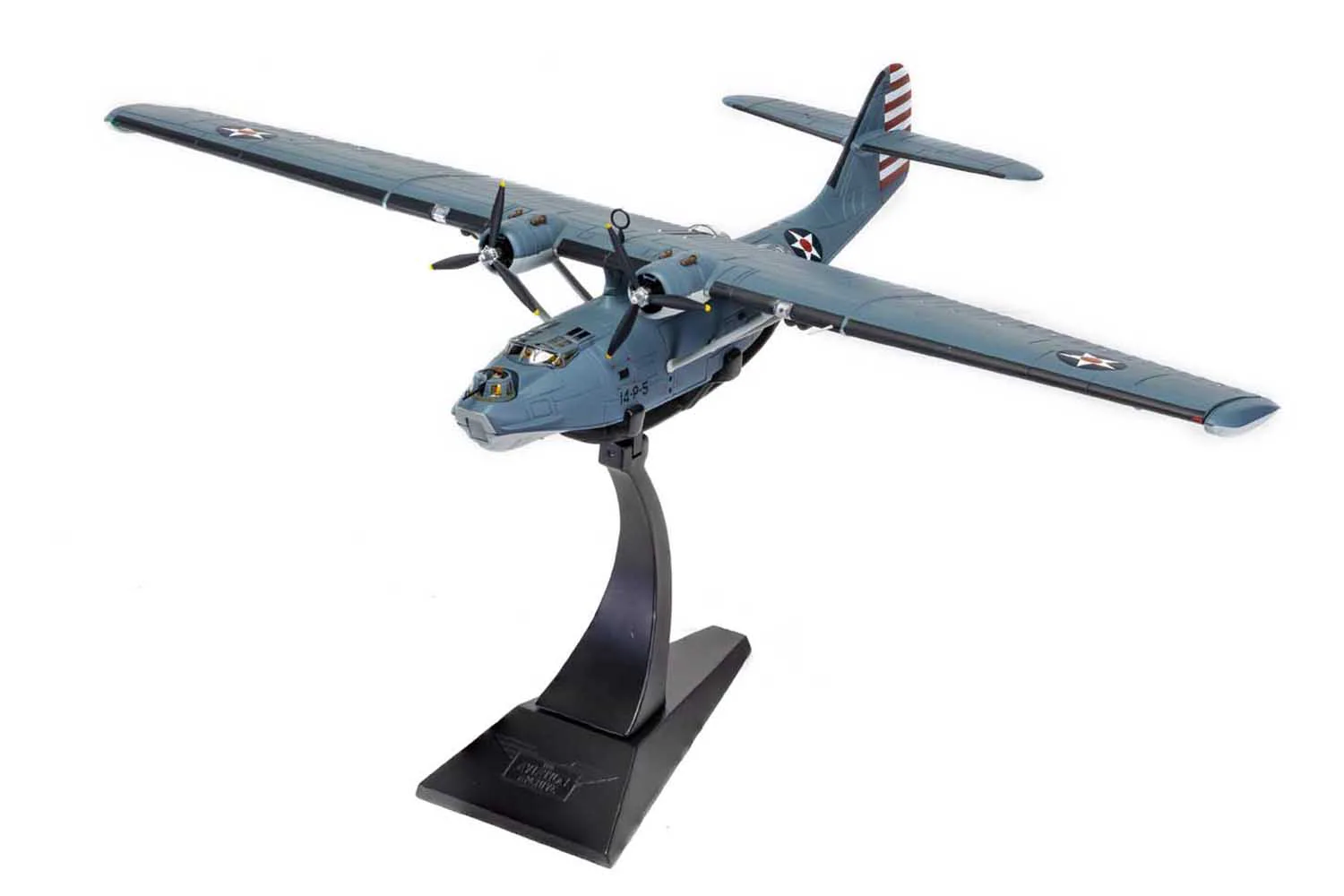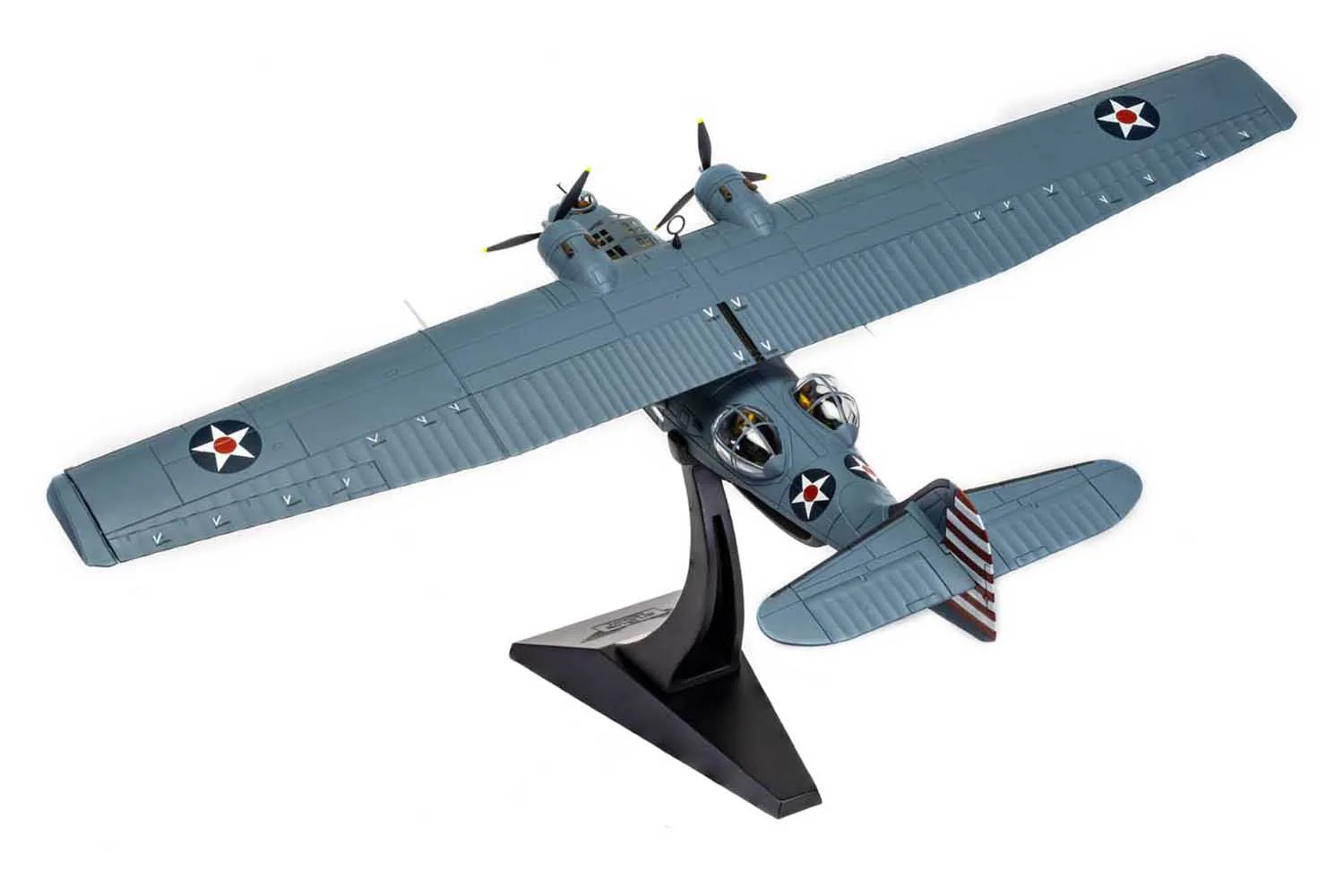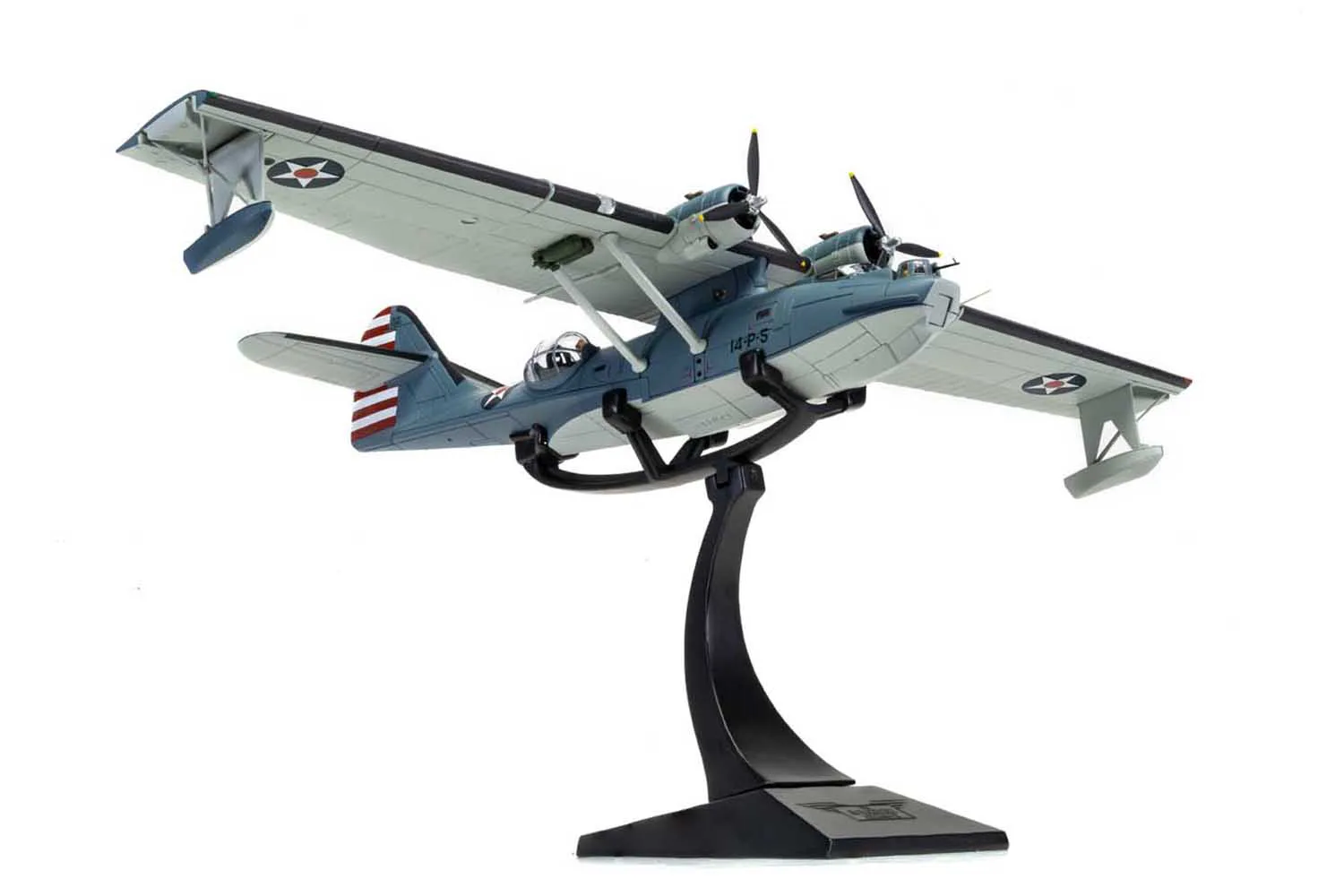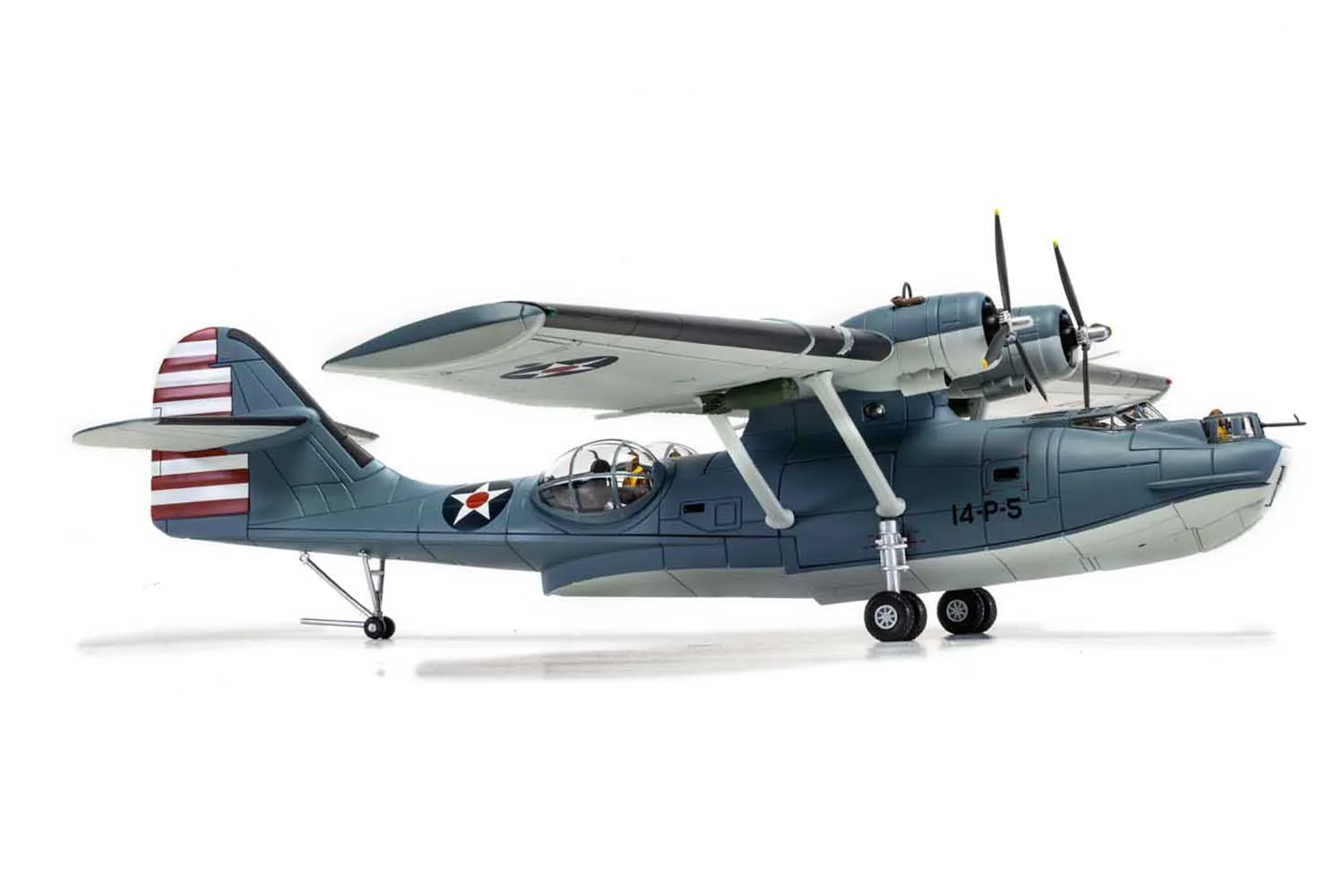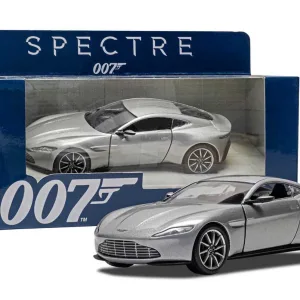Consolidated PBY-5 Catalina, BuNo.2360 14-P-5, Vp-14, US Navy, NAS Kaneohe Bay, Hawaii, Post Pearl Harbor Raid, Late 1941 / Early 1942
Consolidated PBY-5 Catalina
BuNo.2360 14-P-5, VP-14, US Navy, NAS Kaneohe Bay,
Hawaii, Post Pearl Harbor Raid, Late 1941 / Early 1942,
America prepares to strike back
As the Japanese naval Task Force prepared to launch its devastating surprise
attack against multiple US military targets around the massive naval base
at Pearl Harbor on 7th December 1941, their main targets may have
been the huge warships moored in Battleship Row, but they were
acutely aware of the threat posed by another American machine.
The Consolidated PBY Catalina flying boats based on the
Island of Oahu possessed the range to detect the
Japanese ships and could alert American forces to their
presence, not only undermining the effectiveness of the strike,
but also placing the ships in danger of attack themselves. With
a strong force of Mitsubishi Zero fighters retained to protect the
task force from air attack, pilots performing this role knew that
if a Catalina strayed too close, they would only have seconds to
destroy the aircraft, before it could relay details of its discovery
to naval headquarters, where a coordinated attack could
immediately be launched. As it was, a US Navy Catalina did detect the
Japanese raid prior to the first bomb falling, but that of a midget submarine
approaching the entrance of the harbour. Immediately launching an attack on the
vessel and reporting their discovery to headquarters via coded message, the main
attack had already started before military officials had time to plan their response

